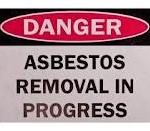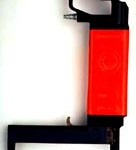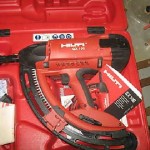Occasionally I hear of certain (construction) trades having to touch asbestos. Usually it is an electrician, sheetmetal worker, carpenter, or plumber.
How it usually happens is that they have a small remodel/install/repair. They must cut through the asbestos to install the item (duct work, electrical, plumbing). Be careful. If you look at OSHA’s definition you may not be able to perform this type of work without specific training. In some cases, 16 hours of asbestos-specific training!
 If you work with any type of asbestos (or, are even near it) you must have Class IV (4) training. This is a 2-hour training which is defined as, “…contact, but DO NOT disturb asbestos…”. As a contractor, you want to make sure you fall under this type of training. The alternative is,
If you work with any type of asbestos (or, are even near it) you must have Class IV (4) training. This is a 2-hour training which is defined as, “…contact, but DO NOT disturb asbestos…”. As a contractor, you want to make sure you fall under this type of training. The alternative is,
Class III (3) training. This type of training where employees are, “likely to disturb” asbestos. Â If you think you disturbed asbestos in your activities, you REALLY should prevent it. Here are some suggestions for making sure you never disturb asbestos.
- Always, always get (in writing) a building survey for asbestos (and leaded paint) before performing work
- Train your employees in how to recognize asbestos, etc. (Class IV training as a minimum. See my earlier post)
- Establish procedures for how you will prevent contact with asbestos
If you must touch (and possibly disturb it) asbestos then also,
- Have specific procedures for how you prevent exposure
- Have PPE (including respirators)
- Obtain air monitoring data while you are performing your activities – document that you DO NOT disturb the asbestos
- Dispose of the material properly
Asbestos is one of those hazards you can’t ignore. If you are not doing the correct procedures, it will bite you (a claim, a citation, a lawsuit, horrible PR, or someone getting ill!).

